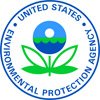EPA Announces $330M WIFIA Loan to Reduce Air Emissions from Wastewater Treatment Plants in Missouri
When combined with other funding sources, the WIFIA program has supported $40 billion for America’s water infrastructure

LENEXA, KAN. (OCT. 10, 2023) – Today, the U.S. Environmental Protection Agency (EPA) announced a Water Infrastructure Finance and Innovation Act (WIFIA) loan totaling $330 million to the Metropolitan St. Louis Sewer District (MSD Project Clear) in Missouri. This funding will help reduce air emissions by 90%, support energy efficiency, and meet regulatory compliance by constructing new biosolids processing facilities.
Since its creation, EPA’s WIFIA program has announced $19 billion in financing to support 112 projects, totaling over $40 billion, that are strengthening drinking water, wastewater, and stormwater infrastructure while creating over 60,000 jobs nationwide.
“This loan will have profound impacts on both the environment and the economy in the St. Louis region,” said EPA Region 7 Administrator Meg McCollister. “Through MSD Project Clear’s efforts, neighboring communities will experience substantially reduced air and odor emissions, as well as increased job opportunities in the region.”
The MSD Project Clear Solids Management Upgrades project will reduce air emissions and ensure continued compliance with regulations. While MSD Project Clear’s existing biosolids treatment facilities, built in the 1970s, continue to meet or exceed all air quality standards, they rely on outdated technology. With EPA’s WIFIA loan, newly constructed biosolids processing facilities will have emissions controls that drastically reduce pollutants and air emissions by 90% using modern, energy efficient equipment that requires less fuel to operate. MSD Project Clear will also construct odor control systems to reduce the impact of unpleasant smells on neighboring communities with environmental justice concerns.
“The Solids Management Upgrades project is about more than infrastructure improvements – it’s a long-term investment in the health and well-being of our community,” said Brian Hoelscher, MSD Project Clear executive director and CEO. “WIFIA’s cost-effective loans are one way we are able to complete these vital improvements while upholding our commitment to be good stewards of public funds.”
MSD Project Clear will save approximately $86 million by financing with a WIFIA loan. Investing in their infrastructure will create approximately 3,000 jobs.
Learn more about EPA’s WIFIA program and water infrastructure investments under the Bipartisan Infrastructure Law.
Background
Established by the Water Infrastructure Finance and Innovation Act of 2014, the WIFIA program is a federal loan program administered by EPA. The program’s aim is to accelerate investment in the nation’s water infrastructure by providing long-term, low-cost supplemental credit assistance for regionally and nationally significant projects. The WIFIA program has an active pipeline of pending applications for projects that will result in billions of dollars in water infrastructure investment and thousands of jobs.
EPA recently made the seventh round of WIFIA financing available and is currently accepting letters of interest for WIFIA and SWIFIA loans, with $6.5 billion available through WIFIA and $1 billion available through SWIFIA, which is a loan program exclusively for state infrastructure financing authority borrowers. EPA is currently accepting letters of interest for WIFIA and SWIFIA loans. Learn more about submitting a letter of interest for a WIFIA loan.
In addition to WIFIA loans, many federal funding resources are available for communities and utilities to improve vital water and wastewater resources. President Biden’s Bipartisan Infrastructure Law is a once-in-a-generation investment in our nation’s infrastructure and competitiveness. It provides a historic $50 billion investment in upgrading critical water, wastewater, and stormwater infrastructure.
# # #
Learn more about EPA Region 7
View all Region 7 news releases
Connect with EPA Region 7 on Facebook
Follow us on Twitter: @EPARegion7
